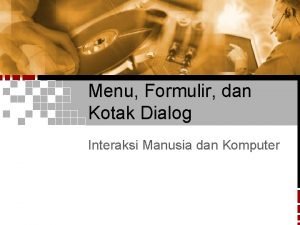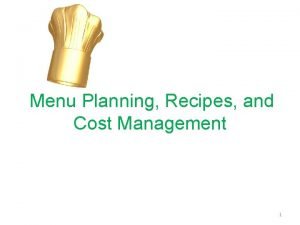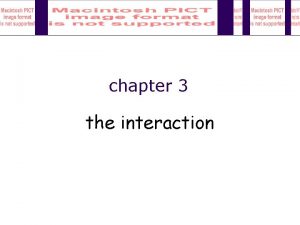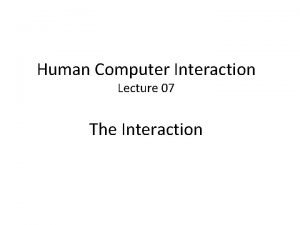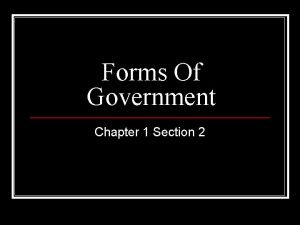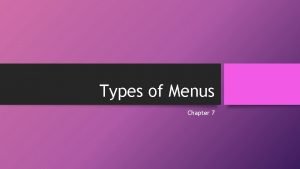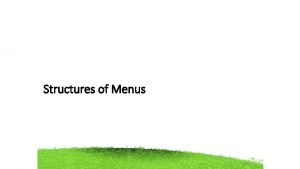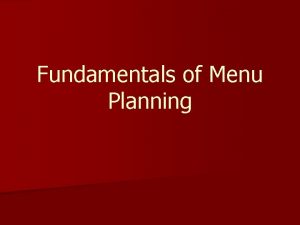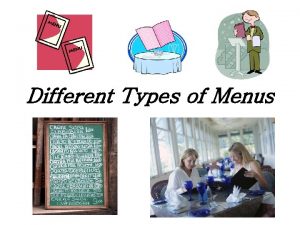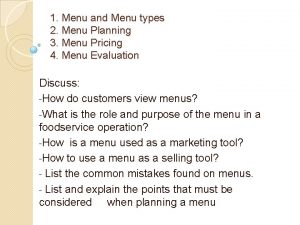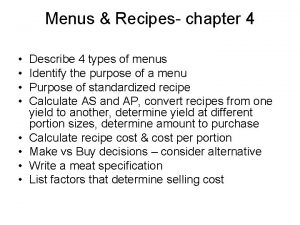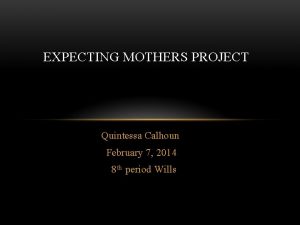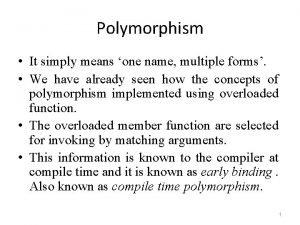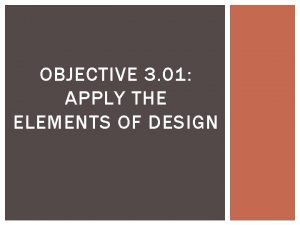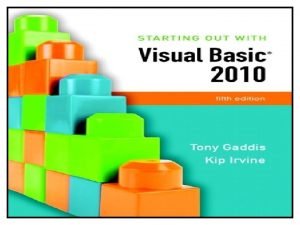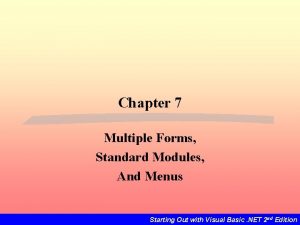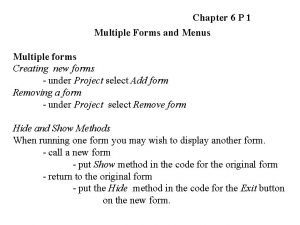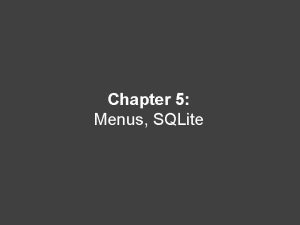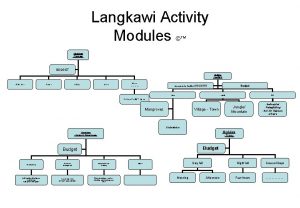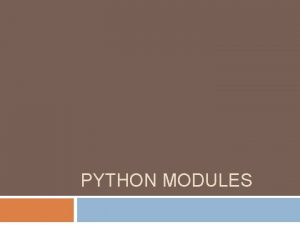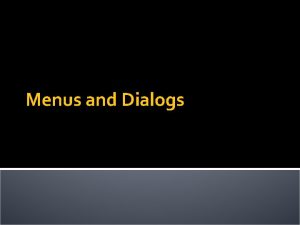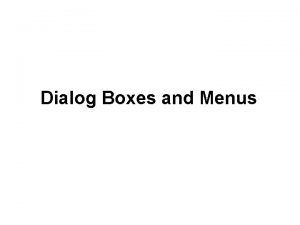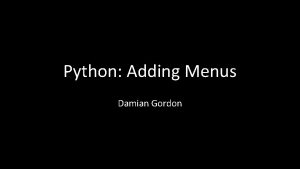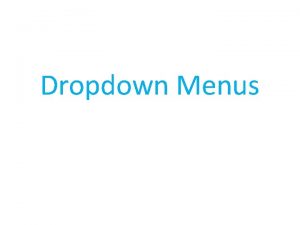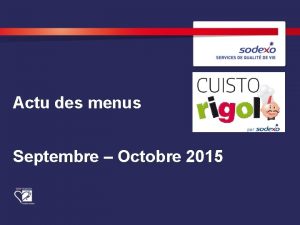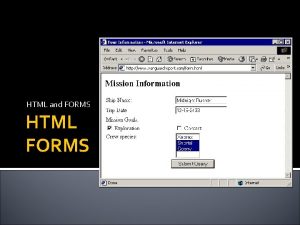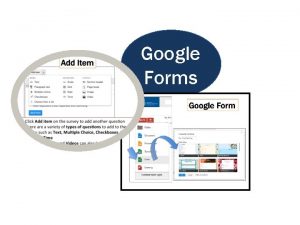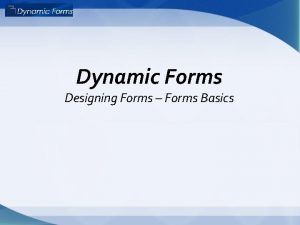Chapter 7 Multiple Forms Modules and Menus Section























- Slides: 23

Chapter 7 Multiple Forms, Modules, and Menus

Section 7. 2 MODULES A module contains code—declarations and procedures—that are used by other files in a project.

What is a Module? • A module is a Visual Basic file that contains only code – General purpose procedures, functions, and declarations of variables and constants – Can be accessed by all forms in the same project – No event handlers – Stored in files that end with the. vb extension – Appears in the Solution Explorer along with entries for the project’s form files Chapter 7 – Slide 3

Module Names and Module Files • A module – begins with a Module statement – ends with an End Module statement • Here is the general format: Module. Name [Module Contents] End Module • Module. Name is the name of the module – Can be any valid identifier – That describes its purpose • Code is stored in a file that is named with the. vb extension • Normally, the name of the file is the same as the name of the module Chapter 7 – Slide 4

Example Module • The following code shows the contents of a module named Retail. Math Module Retail. Math ' Global constant for the tax rate Public Const dec. TAX_RATE As Decimal = 0. 07 D ' The Sales. Tax function returns the sales tax on a purchase. Public Function Sales. Tax(By. Val dec. Purchase As Decimal) As Decimal Return dec. Purchase * dec. TAX_RATE End Function End Module Chapter 7 – Slide 5

Adding a Module • Follow these steps to add a module to a project: 1. Click Project on the menu bar and then click Add Module. The Add New Item windows appears 2. Change the default name that appears in the Name text box to the name you wish to give the new module file 3. Click the Add button • A new empty module will be added to your project • The module is displayed in the Code window • An entry for the module appears in the Solution Explorer window Chapter 7 – Slide 6

Module-Level Variables • A module-level variable is a variable that is declared inside a module, but not inside a procedure or function • The same rules about the scope of class-level variables in a form apply to module-level variables in a module • Variables with module scope are declared with Dim or Private – Accessible to any function or procedure in the module – Not accessible to statements outside of the module • A global variable is declared with the Public keyword – Accessible to any statement in the application – Some programmers prefix global variables with g_ Public g_dec. Purchase. Amount As Decimal ' Global variable • Tutorial 7 -4 examines an application that uses a module Chapter 7 – Slide 7

Using a Module in More Than One Project • It is possible to use more than one module in a project • Suppose you want to add an existing module to a new project • Follow these steps to add an existing standard module to a project: 1. Click Project on the menu bar, and then click Add Existing Item. The Add Existing Item dialog box appears 2. Use the dialog box to locate the module file you want to add to the project. When you locate the file, select it and click the Open button • The module is now added to the project Chapter 7 – Slide 8

Section 7. 3 MENUS Visual Basic allows you to create a system of drop-down menus for any form in your application. You use the menu designer to create a menu system.

Menu Systems • A menu system is a collection of commands organized in one or more drop-down menus – commonly used when an application has several options for the user to choose from • The menu designer allows you to visually create a custom menu system – for any form in an application Chapter 7 – Slide 10

Components of a Menu System • Each drop-down menu has a menu name • Each drop-down menu has a list of actions or menu commands that can be performed • Some commands may lead to a submenu Chapter 7 – Slide 11

Components of a Menu System • Actions may be performed using a key or key combination called a shortcut key • A checked menu command toggles between the checked (if on) and unchecked (if off) states • A separator bar helps group similar commands Chapter 7 – Slide 12

Menu. Strip Control • A Menu. Strip control adds a menu to a form – Double-click on the Menu. Strip icon in the Menus & Toolbars section of the Toolbox • The Menu. Strip control is displayed in the component tray (bottom of Design window) • A Menu. Strip can have many Tool. Strip. Menu. Item objects: – Each represents a single menu command – Name property - used by VB to identify it – Text property – text displayed to the user Chapter 7 – Slide 13

How to Use the Menu Designer The word File has been typed as the text for the first menu item Select the box to enter the next menu item Chapter 7 – Slide 14

Tool. Strip. Menu. Item Object Names • It is recommended that you change the default value of the Name property so that it – Begins with the mnu prefix – Reflects the Text property and position in the menu hierarchy • • mnu. File. Save mnu. File. Print mnu. File. Exit Chapter 7 – Slide 15

Shortcut Keys • Combination of keys that cause a menu command to execute – Ctrl + C to copy an item to the clipboard – Set with the Shortcut. Keys property – Displayed only if the Show. Shortcut property is set to True Chapter 7 – Slide 16

Disabled Menu Items • A menu item is grayed out (disabled) with the Enabled property, for example: – Paste option is initially disabled and only enabled after something is cut or copied – Code initially disables the Paste option mnu. Edit. Paste. Enabled = False – Following a cut or copy, Paste is enabled mnu. Edit. Paste. Enabled = True Chapter 7 – Slide 17

Adding Separator Bars • Right-click menu item, select Insert Separator – A separator bar will be inserted above the menu item Chapter 7 – Slide 18

Submenus • When selecting a menu item in the designer, a Type Here box appears to the right – Begin a submenu by setting up this menu item • If a menu item has a submenu, a solid rightpointing arrow( )will be shown Type here to add a submenu item Chapter 7 – Slide 19

Inserting, Deleting, And Rearranging Menu Items • To insert a new menu item – Right-click an existing menu item – Select Insert then Menu. Item from pop-up menu – A new menu item will be inserted above the existing menu item • To delete a menu item – Right-click on the item – Choose Delete from the pop-up menu – Or select the menu item and press the Delete key • To rearrange a menu item – Simply select the menu item in the menu designer and drag it to the desired location Chapter 7 – Slide 20

Tool. Strip. Menu. Item Click Event • Menus and submenus require no code • Commands must have a click event procedure – Double click on the menu item – Event procedure created in the code window – Programmer supplies the code to execute • Suppose a menu system has a File menu with an Exit command named mnu. File. Exit Private Sub mnu. File. Exit_Click(. . . ) Handles mnu. File. Exit. Click ' Close the form. Me. Close() End Sub Chapter 7 – Slide 21

Standard Menu Items • Most applications to have the following menu items – File as the leftmost item on the menu strip • Access key Alt + F – An Exit command on the File menu • Access key Alt + X – Help as the rightmost item on the menu strip • Access key Alt + H – An About command on the Help menu • Access key Alt + A • Displays an About box • Tutorial 7 -5 demonstrates how to build a simple menu system Chapter 7 – Slide 22

Context Menus • A context menu, or pop-up menu, is displayed when the user right-clicks a form or control • To create a context menu – – – – Double-click the Context. Menu. Strip icon in the Toolbox window A Context. Menu. Strip control appears in the component tray Change the Context. Menu. Strip control’s default Name property Add menu items with the menu designer Create click event procedures for the menu items Associate the context menu with a control Set the control’s Context. Menu. Strip property to the name of the Context. Menu. Strip control Chapter 7 – Slide 23
 Linear sequences dan multiple menus
Linear sequences dan multiple menus Menus recipes and cost management
Menus recipes and cost management Palettes and tear-off menus
Palettes and tear-off menus Palettes and tear-off menus
Palettes and tear-off menus What are the elements of wimp interface
What are the elements of wimp interface Multiple probe vs multiple baseline
Multiple probe vs multiple baseline Multiple instruction single data
Multiple instruction single data I am not short form
I am not short form Weak and strong form of can
Weak and strong form of can Chapter 1 section 2 forms of government
Chapter 1 section 2 forms of government Chapter 1 section 2 forms of government
Chapter 1 section 2 forms of government What is cyclical menu
What is cyclical menu Event trapping menus examples
Event trapping menus examples Foundations of menu planning
Foundations of menu planning Zclubus
Zclubus The type of menu that offers the same dishes everyday is
The type of menu that offers the same dishes everyday is Ugr-m menus
Ugr-m menus Explain factors to consider when proposing dishes for menus
Explain factors to consider when proposing dishes for menus Cacfp menus
Cacfp menus Types of menu
Types of menu What are the four types of menus
What are the four types of menus 5 days of sample menus for pregnant women
5 days of sample menus for pregnant women One name multiple forms refer to
One name multiple forms refer to Why are related forms more agreeable than unrelated forms?
Why are related forms more agreeable than unrelated forms?
